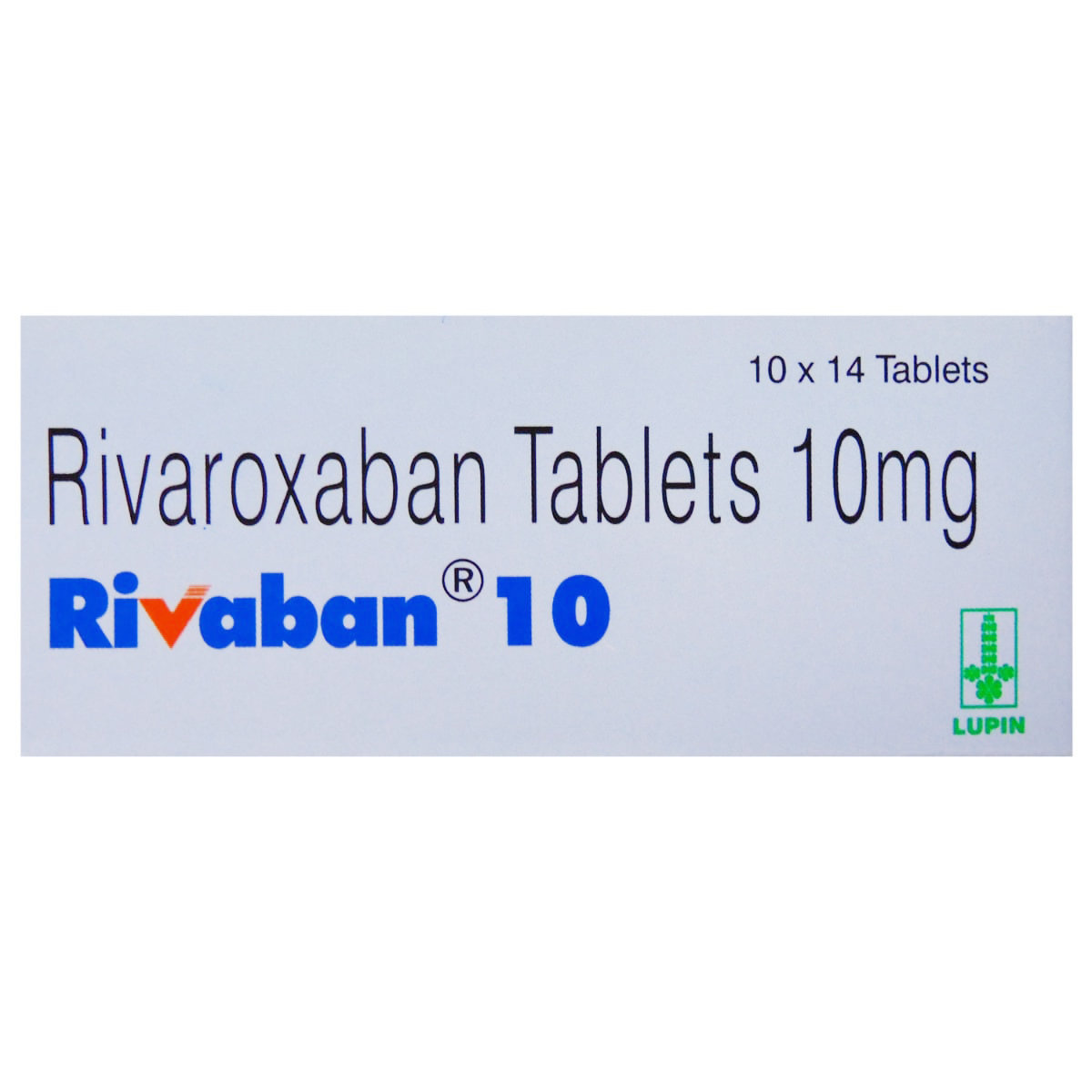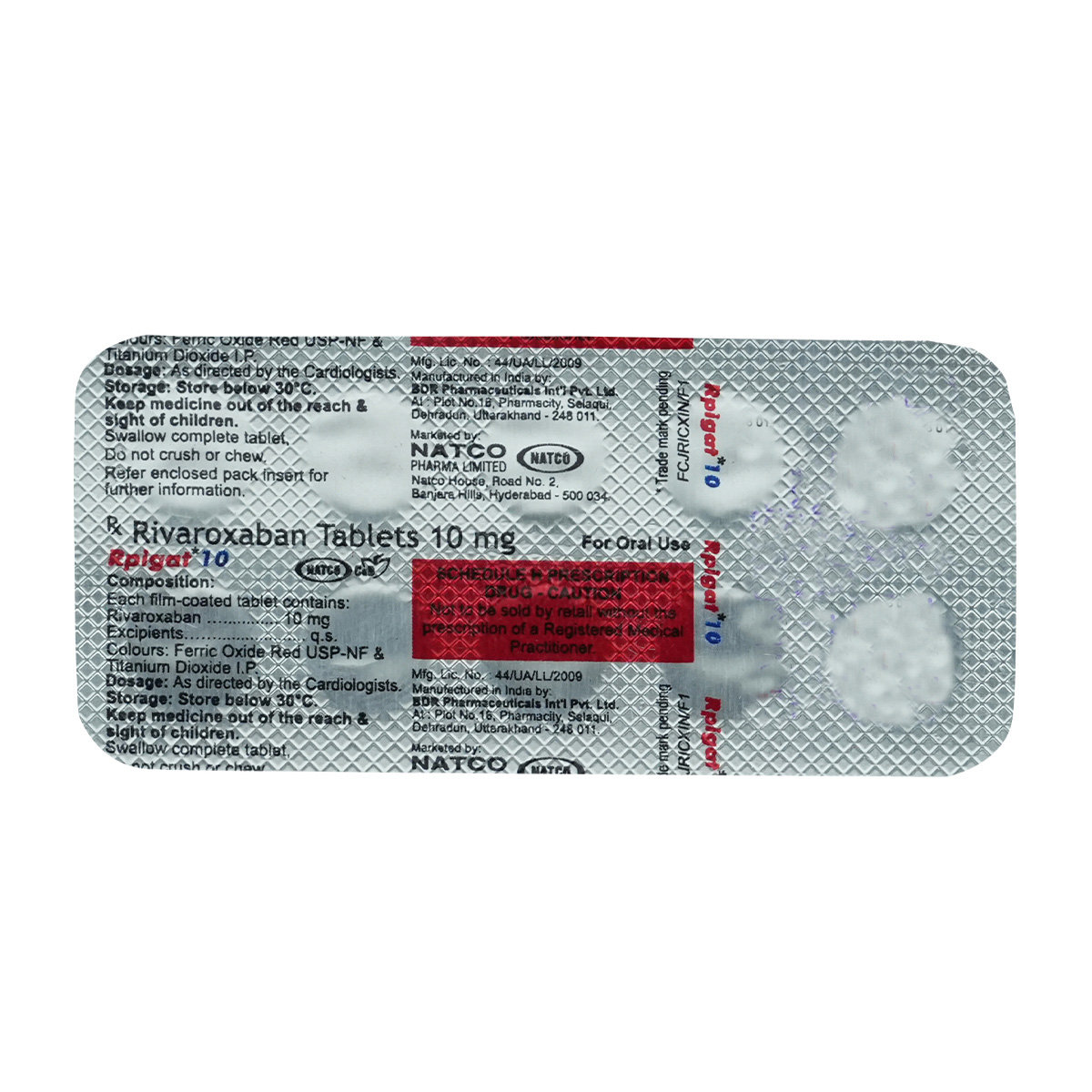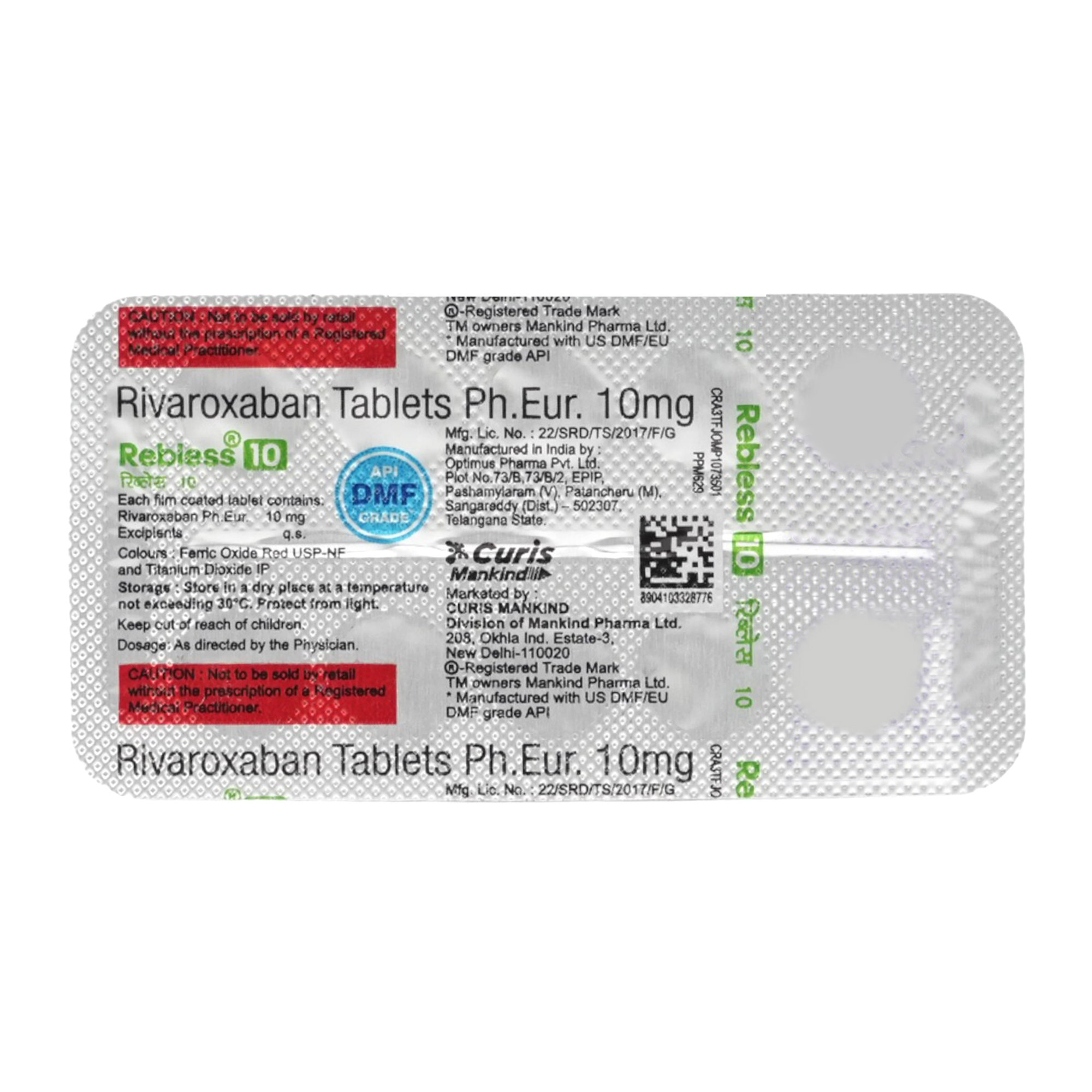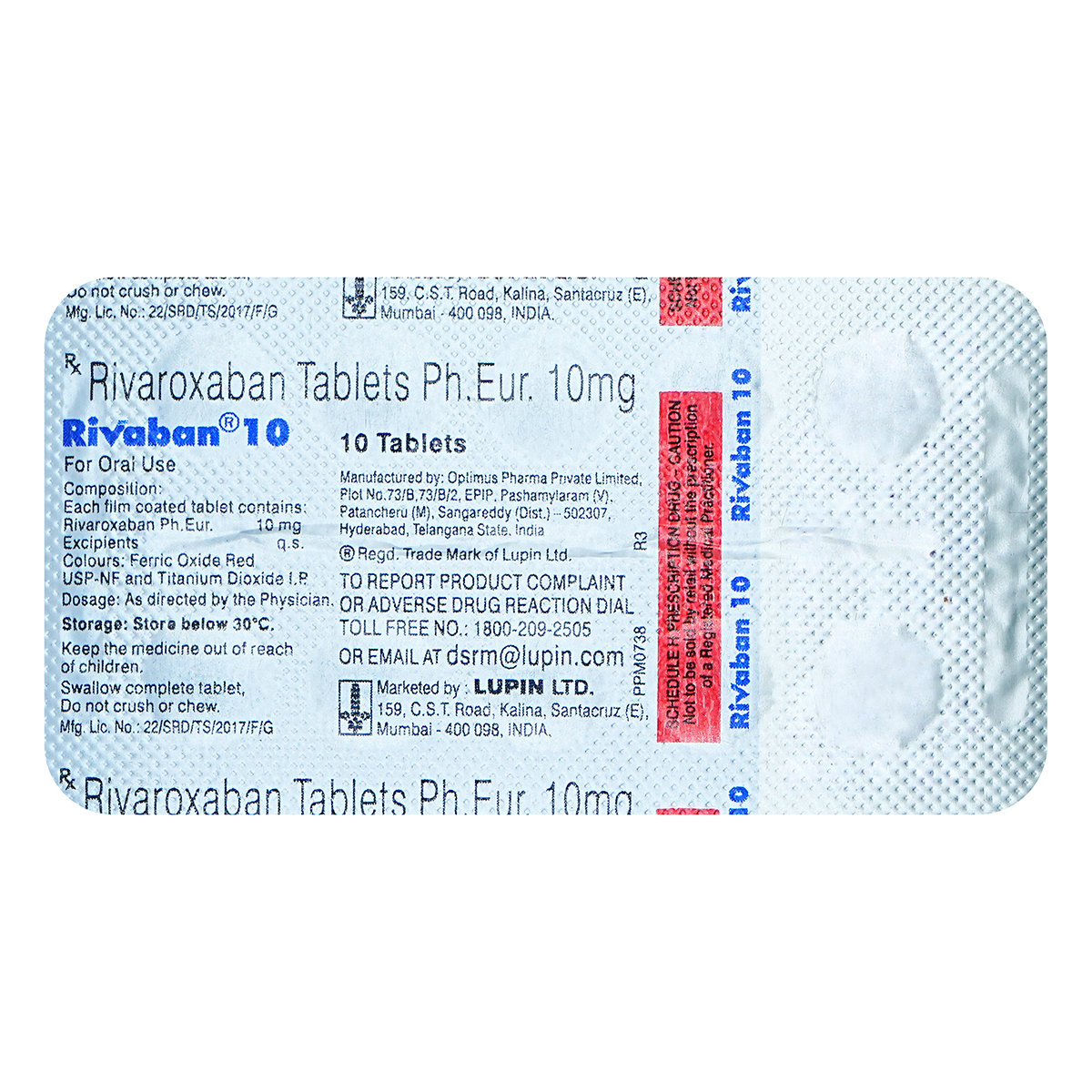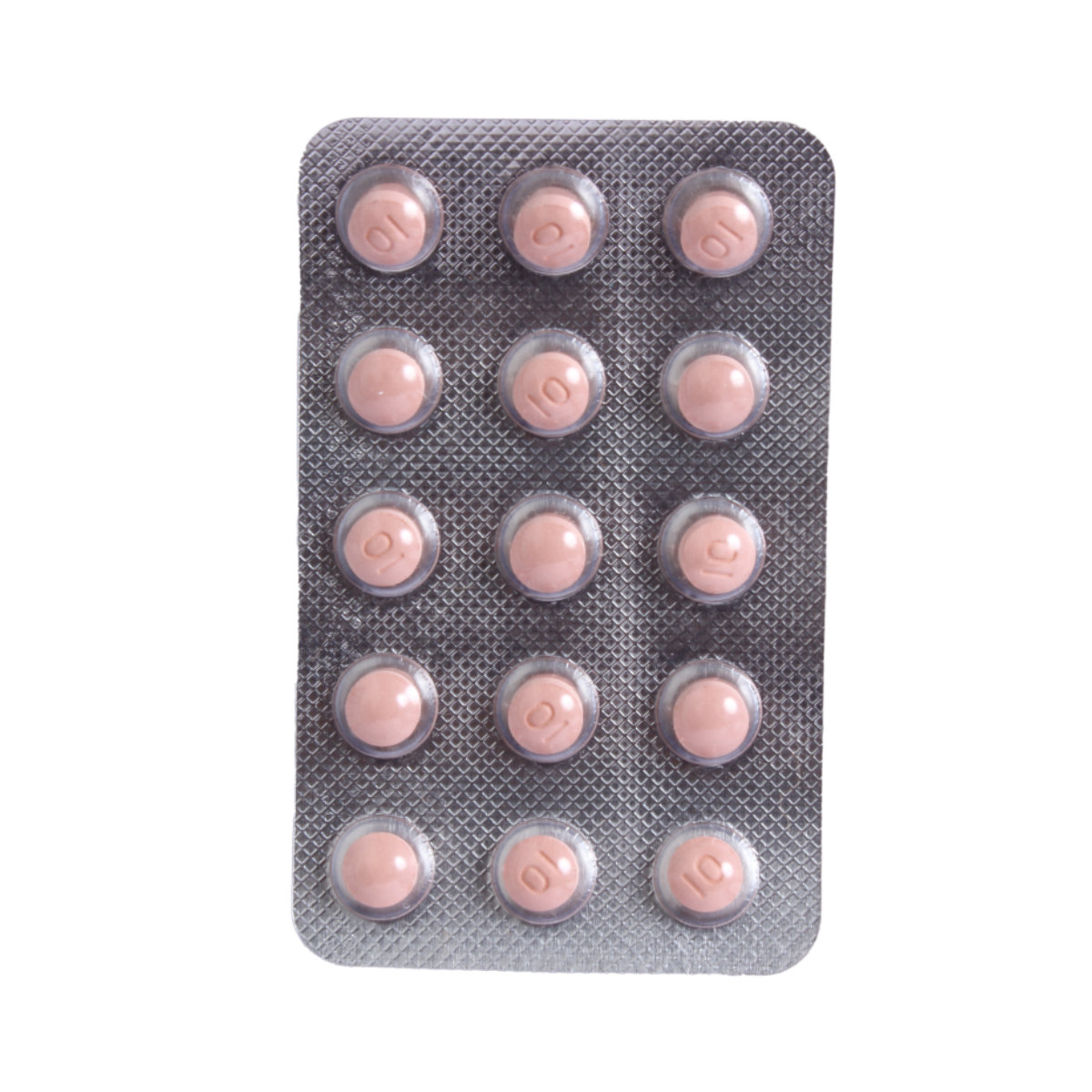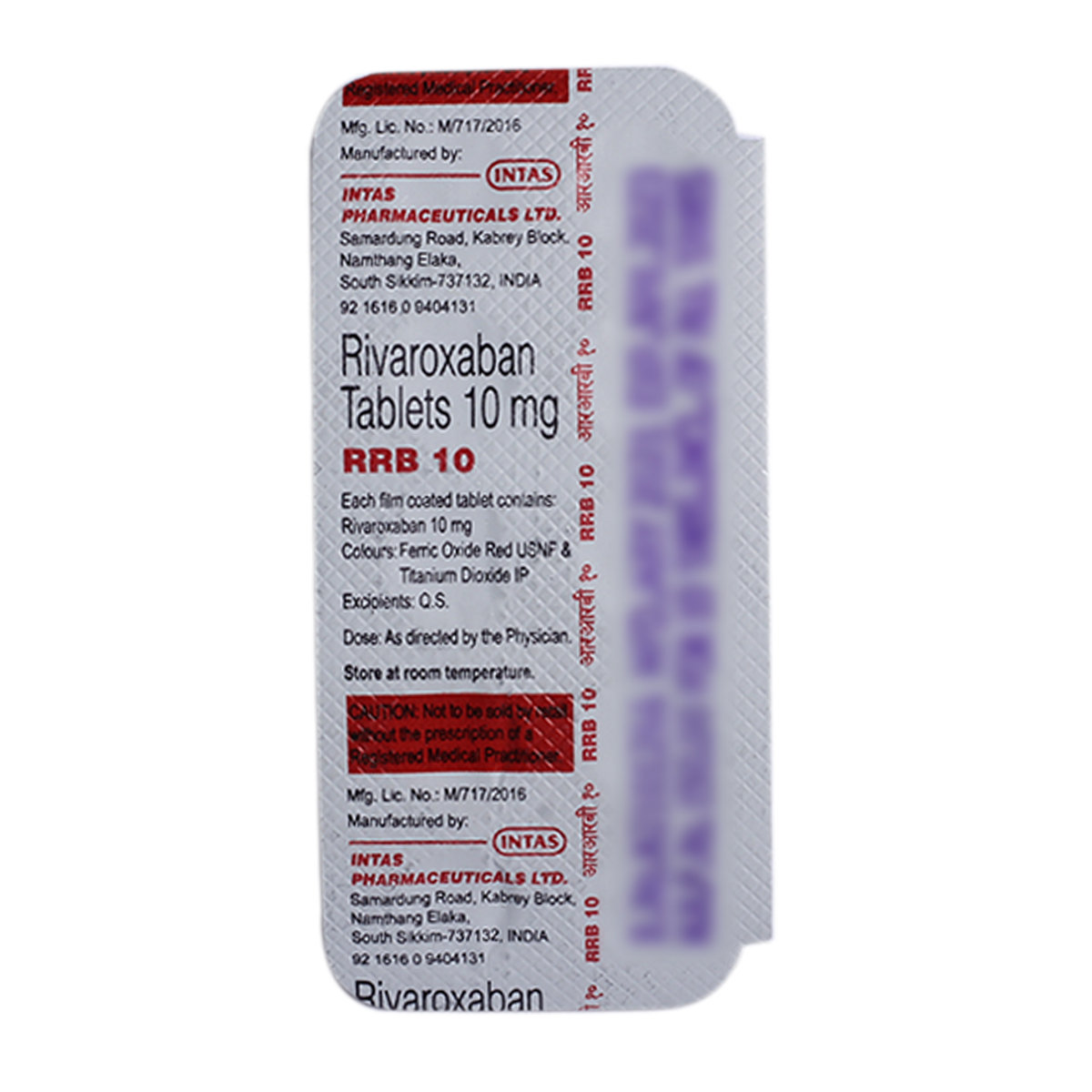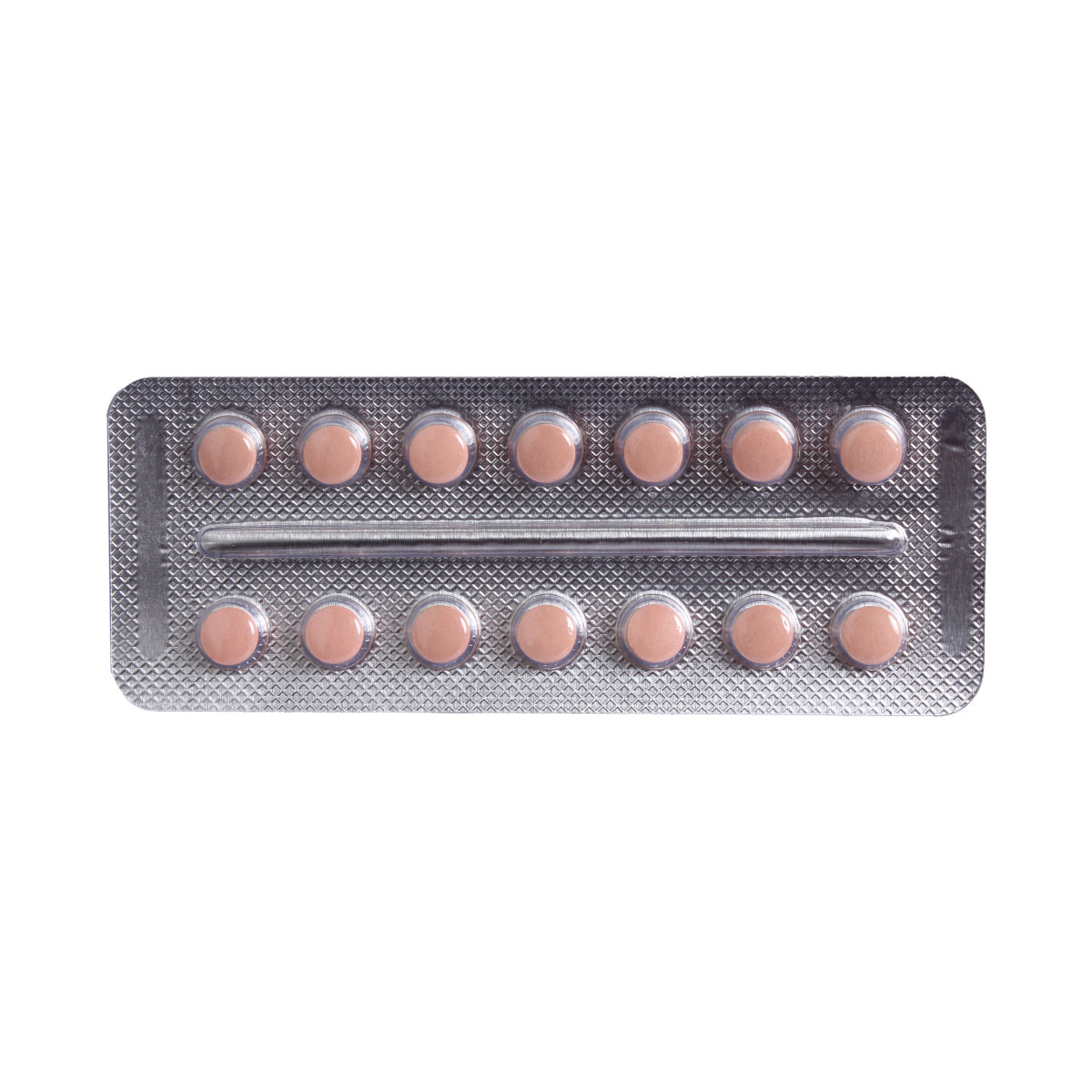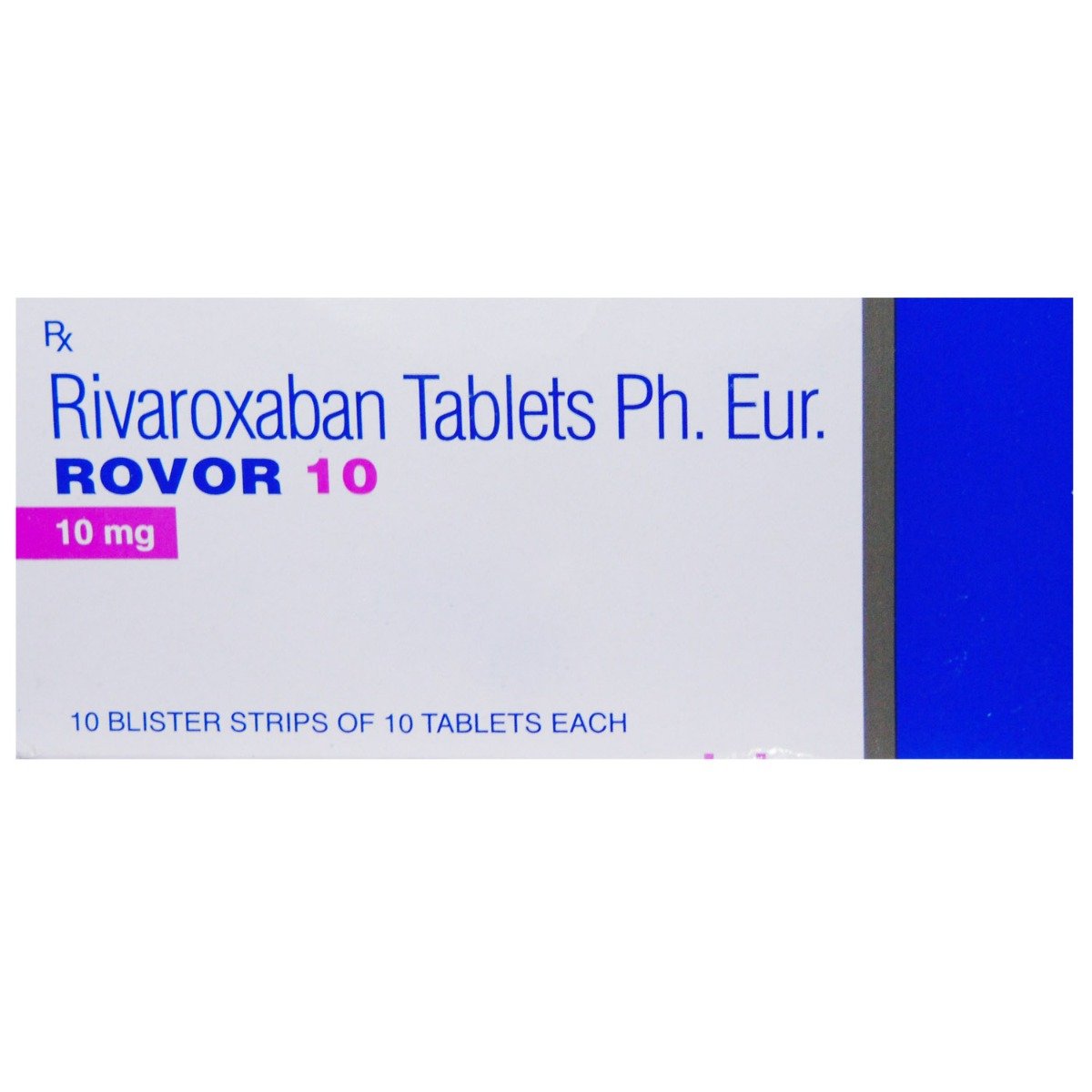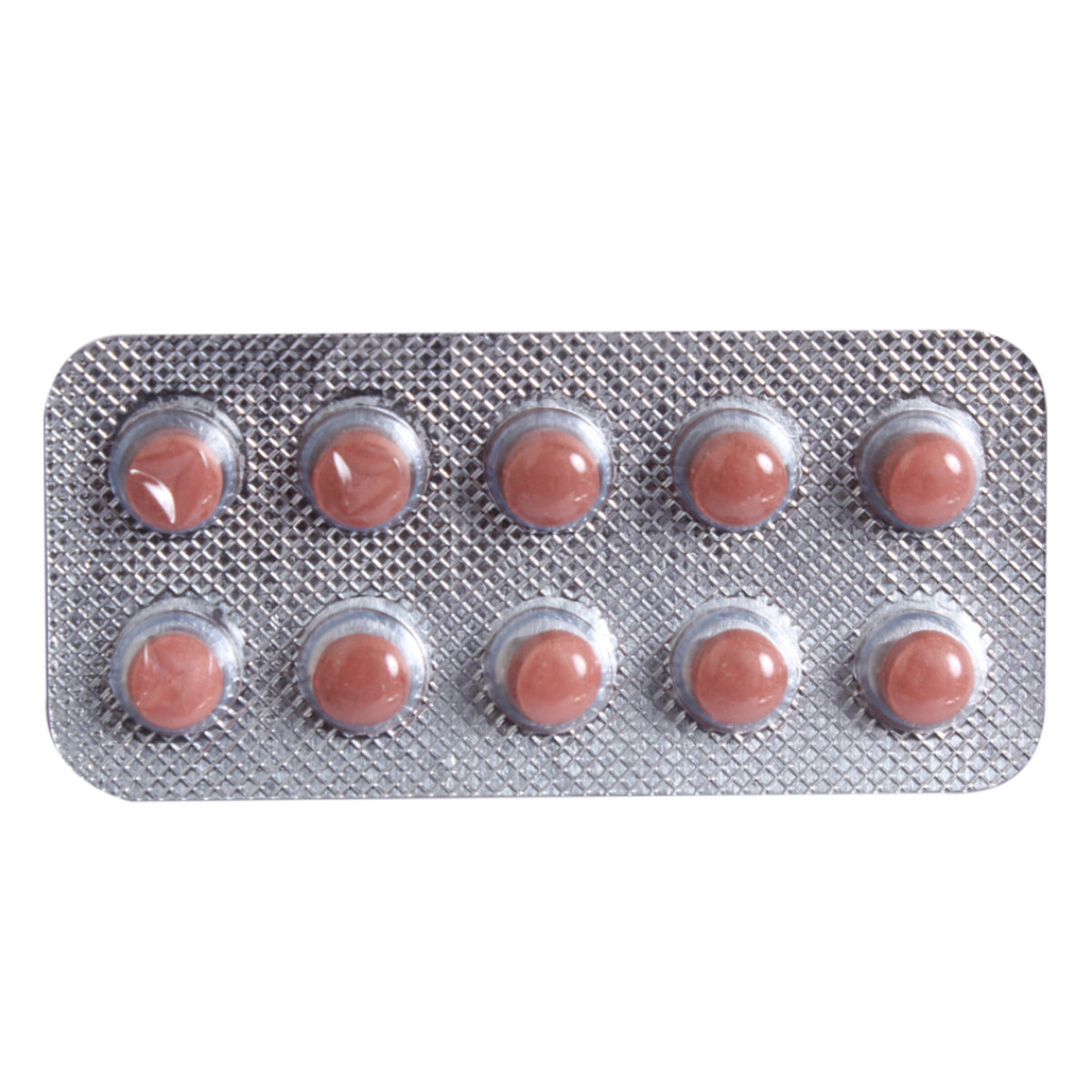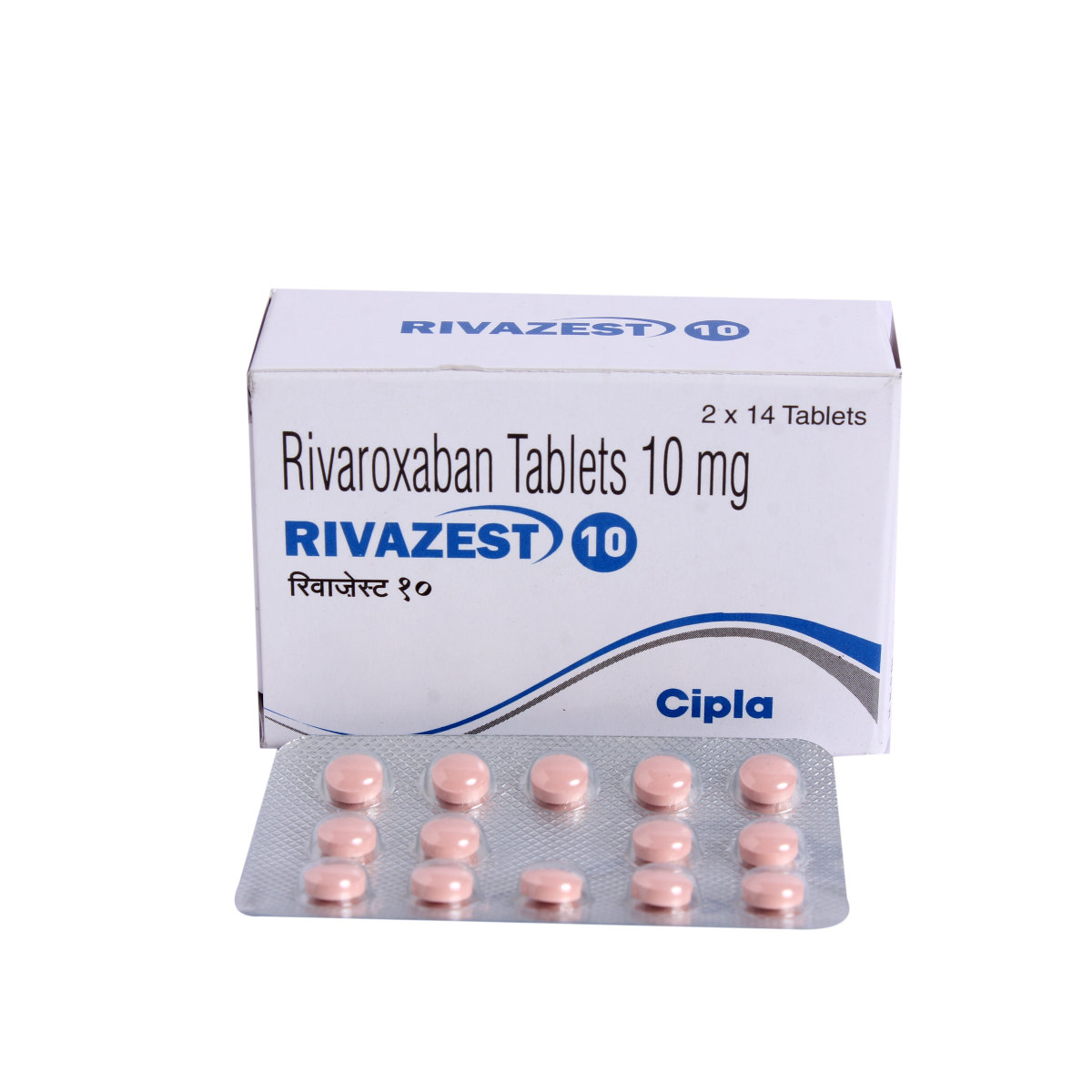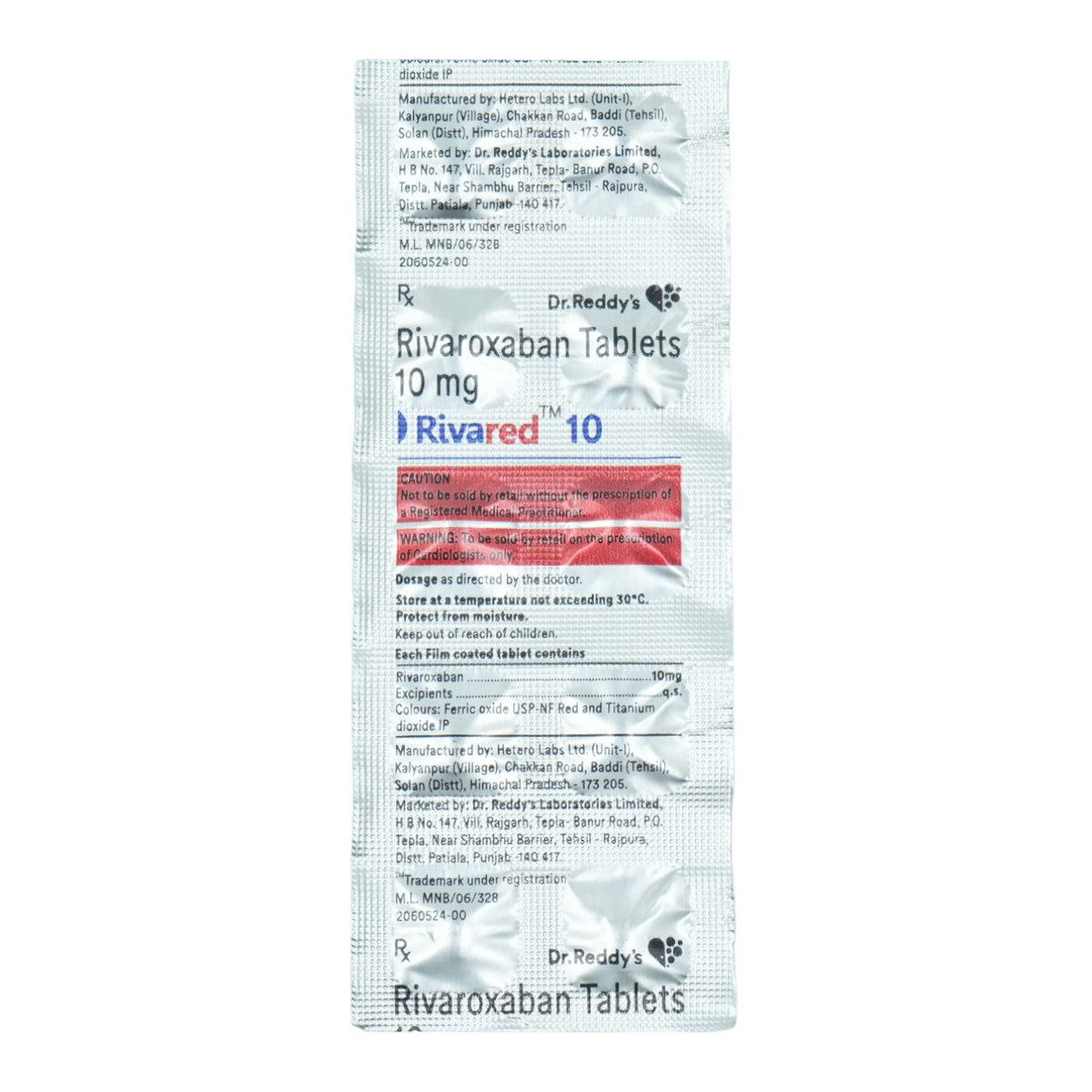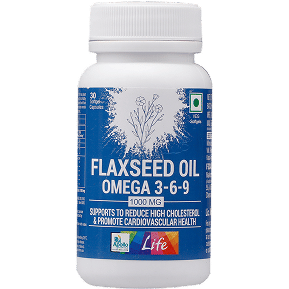Xarelto 10 mg Tablet
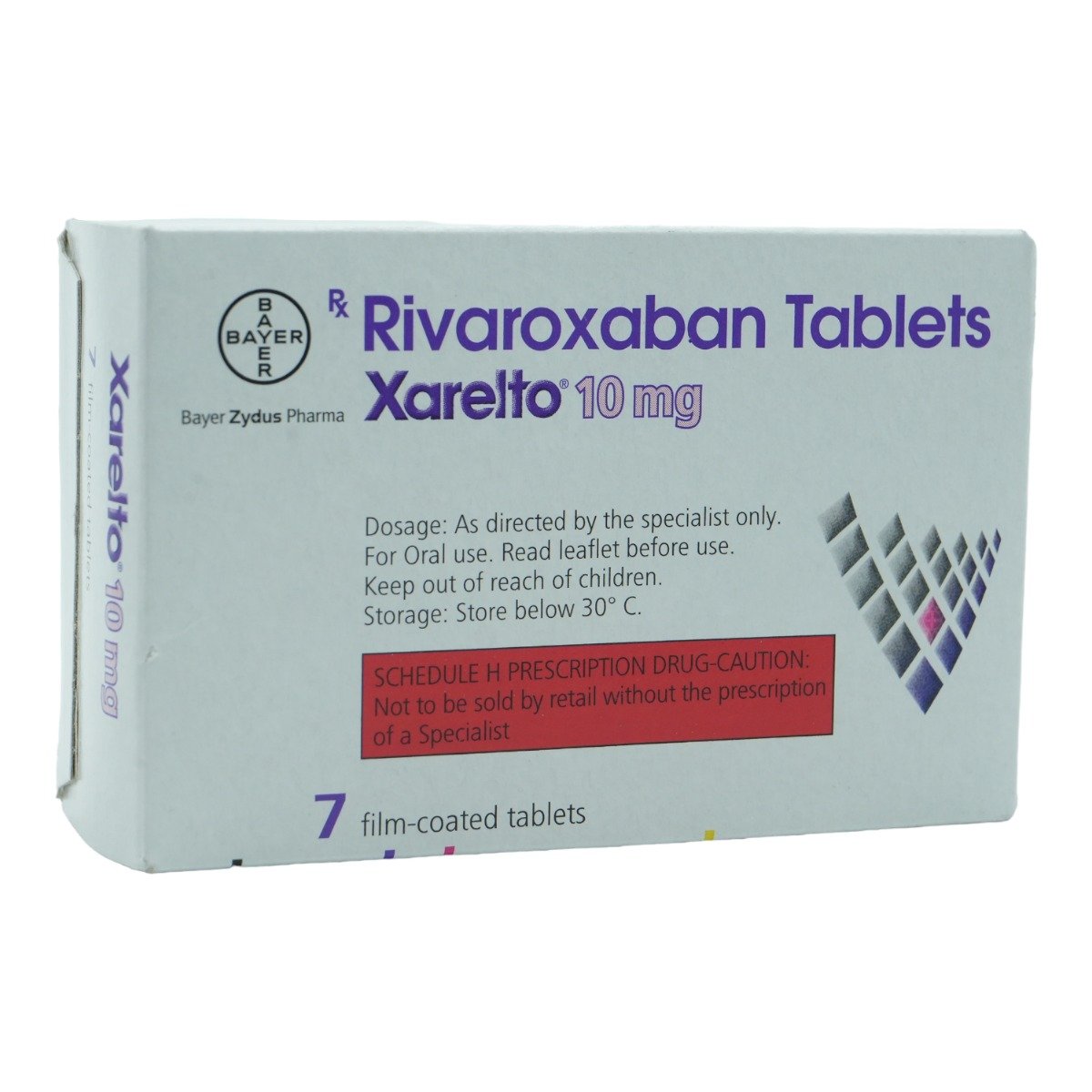
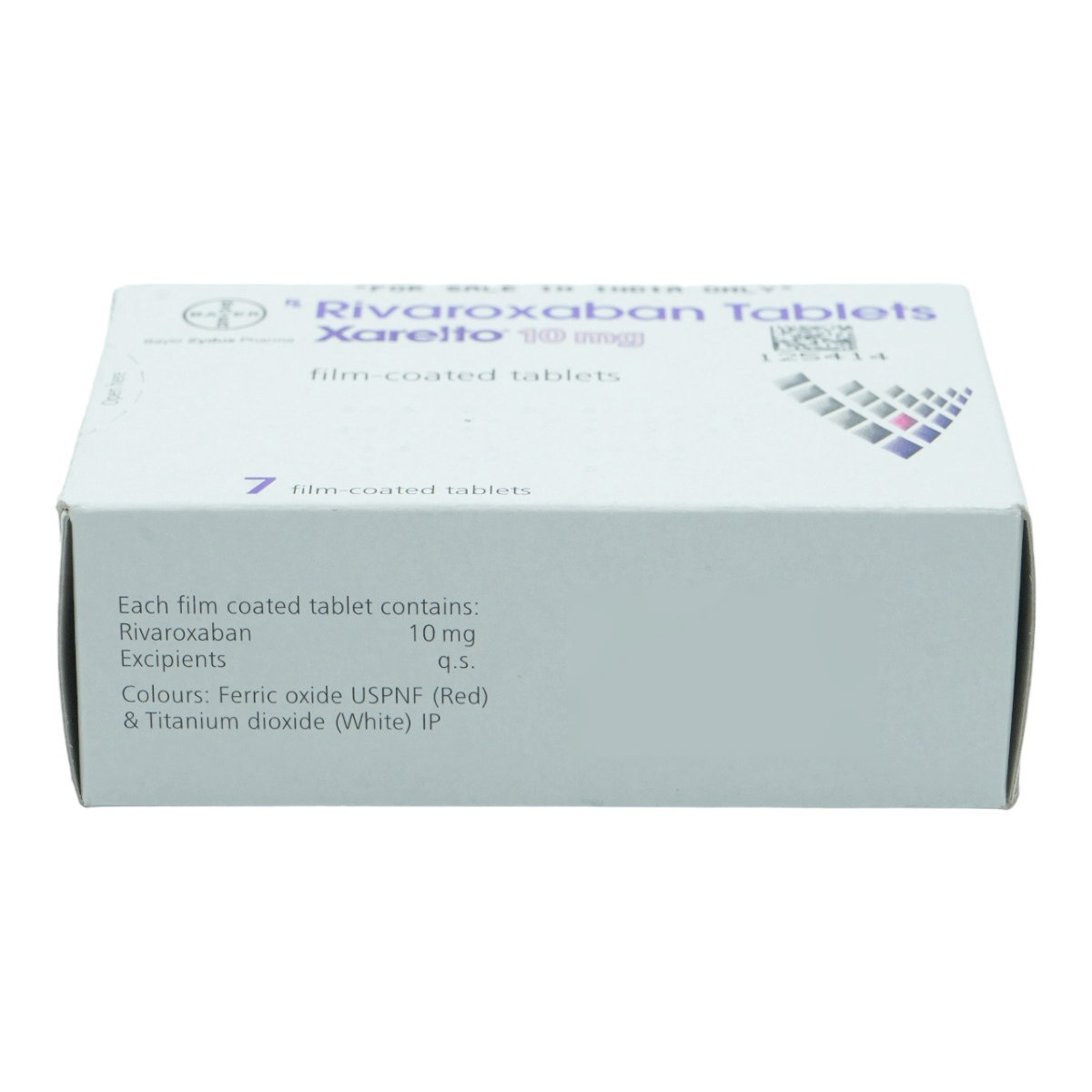
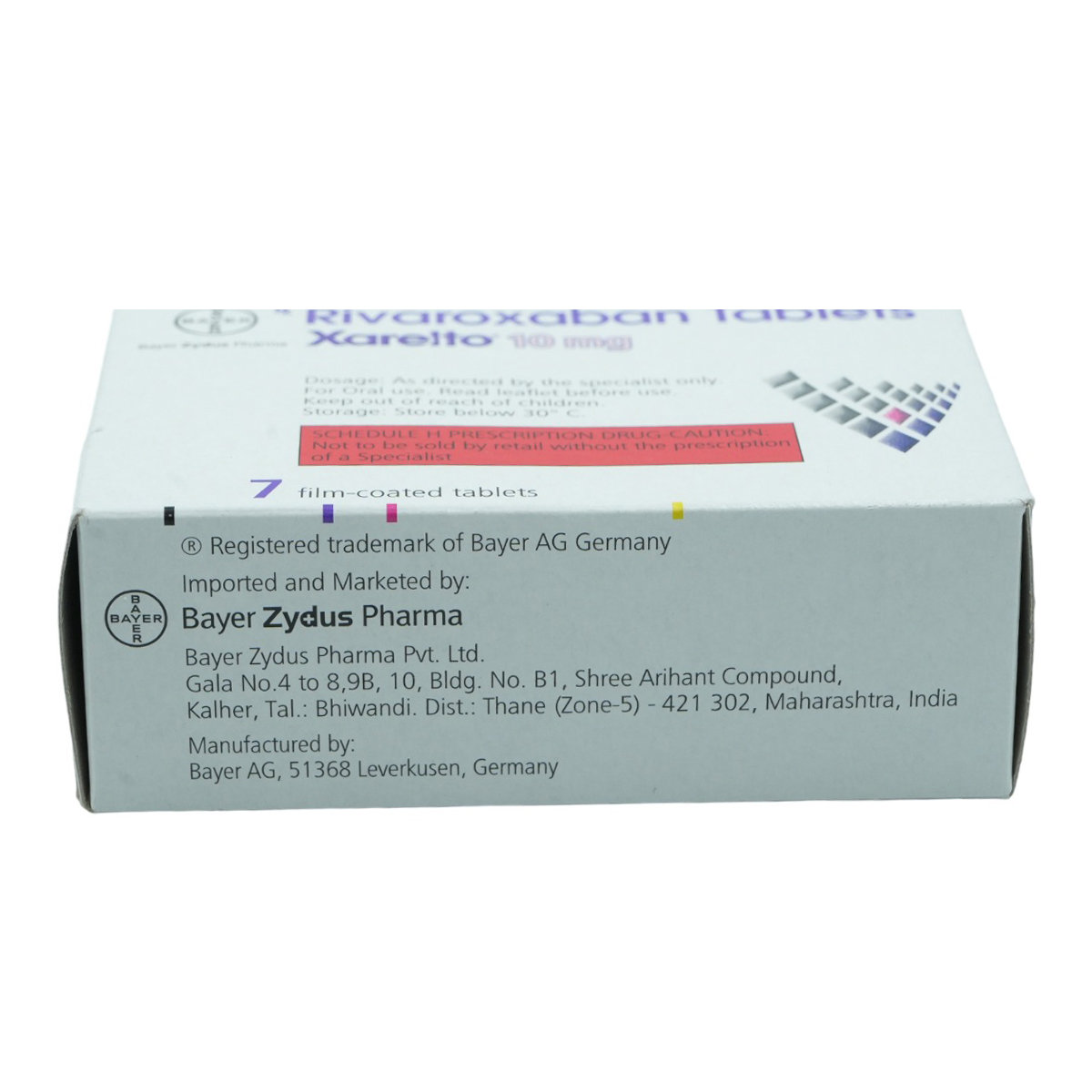
MRP ₹951.5
(Inclusive of all Taxes)
₹142.7 Cashback (15%)
know your delivery time
Provide Delivery Location
Composition :
Manufacturer/Marketer :
Consume Type :
Expires on or after :
Return Policy :

Secure Payment

Trusted by 8 Crore Indians

Genuine Products
Therapeutic Class
Country of origin
Manufacturer/Marketer address
Disclaimer
Alcohol
Safe if prescribed
You are recommended to avoid consumption of alcohol with Xarelto 10 mg Tablet as it may increase the risk of bleeding.
Pregnancy
Consult your doctor
Tell your doctor before using Xarelto 10 mg Tablet because it may cause harmful effects. So, only use in that condition when a doctor is prescribed.
Breast Feeding
Consult your doctor
Xarelto 10 mg Tablet may pass into breast milk. Therefore consult your doctor.
Driving
Safe if prescribed
Xarelto 10 mg Tablet usually does not affect your ability to drive or operate machinery.
Liver
Consult your doctor
Take Xarelto 10 mg Tablet with caution, especially if you have a history of Liver diseases/conditions. The dose may be adjusted by your doctor as required.
Kidney
Consult your doctor
Take Xarelto 10 mg Tablet with caution, especially if you have a history of Kidney diseases/conditions. The dose may be adjusted by your doctor as required.
Children
Safe if prescribed
Xarelto 10 mg Tablet is not approved for children. Therefore Xarelto 10 mg Tablet is not safe for children.
Product Substitutes
About Xarelto 10 mg Tablet
Xarelto 10 mg Tablet belongs to a class of drugs known as anticoagulants or blood thinner. Xarelto 10 mg Tablet is primarily used to prevent and treat deep vein thrombosis (blood clots in leg veins) and pulmonary embolism (blood clots in the lung) by reducing blood clot formation. Deep vein thrombosis is a medical condition in which blood clots form in deep veins usually in the legs. Pulmonary embolism is a condition in which a blood clot blocks the arteries in the lungs.
Xarelto 10 mg Tablet contains Rivaroxaban, a blood thinner that works by inhibiting the production of clotting factors by decreasing the action of vitamin K. This prevents the conversion of fibrinogen (soluble protein) to fibrin (insoluble protein), thereby preventing blood clots formation.
Take Xarelto 10 mg Tablet as prescribed. You are advised to take Xarelto 10 mg Tablet for as long as your doctor has prescribed it for you depending on your medical conditions. You may experience bleeding, anemia (low number of red blood cells), and nausea. Most of these side effects of Xarelto 10 mg Tablet do not require medical attention and gradually resolve over time. However, if the side effects are persistent, reach out to your doctor.
If you are known to be allergic to Xarelto 10 mg Tablet or any other medicines, please tell your doctor. If you are pregnant or breastfeeding, it is advised to consult a doctor before using Xarelto 10 mg Tablet. If you have a stomach ulcer, kidney or liver problems, high blood pressure, or bleeding problems, inform your doctor before taking Xarelto 10 mg Tablet. Talk to your doctor immediately if you are pregnant or breastfeeding.
Uses of Xarelto 10 mg Tablet
Medicinal Benefits Mweb
Key Benefits
Xarelto 10 mg Tablet belongs to a class of drugs known as anticoagulants or blood thinner. Xarelto 10 mg Tablet is primarily used to prevent and treat deep vein thrombosis (blood clots in leg veins) and pulmonary embolism (blood clots in the lung) by reducing blood clot formation. Xarelto 10 mg Tablet works by inhibiting the production of clotting factors by decreasing the action of vitamin K. This prevents the conversion of fibrinogen (soluble protein) to fibrin (insoluble protein), thereby preventing blood clots formation.
Directions for Use
Side Effects of Xarelto 10 mg Tablet
- Bleeding
- Anaemia (low number of red blood cells)
- Nausea
Drug Warnings
Xarelto 10 mg Tablet should be used with caution in children. Prolonged use of Xarelto 10 mg Tablet may cause hair loss. Regular blood tests are recommended while taking Xarelto 10 mg Tablet to check the time taken for your blood to clot and the level of platelets (blood cells). If you are known to be allergic to Xarelto 10 mg Tablet or any other medicines, please tell your doctor. If you are pregnant or breastfeeding, it is advised to consult a doctor before using Xarelto 10 mg Tablet. If you have a stomach ulcer, kidney or liver problems, high blood pressure, or bleeding problems, inform your doctor before taking Xarelto 10 mg Tablet. Talk to your doctor immediately if you are pregnant or breastfeeding.
Drug-Drug Interactions
Drug-Drug Interactions
Login/Sign Up
Co-administration of Tenecteplase and Xarelto 10 mg Tablet can increase the risk of bleeding.
How to manage the interaction:
Co-administration of Tenecteplase and Xarelto 10 mg Tablet can lead to an interaction, it can be taken if advised by your doctor. However, if you experience any symptoms like unusual bleeding or bruising, dizziness, lightheadedness, red or black, tarry stools, coughing up or vomiting fresh or dried blood that looks like coffee grounds, severe headache, and weakness, consult the doctor immediately. Do not stop using any medications without a doctor's advice.
Coadministration of Itraconazole and Xarelto 10 mg Tablet may significantly increase the blood levels of Xarelto 10 mg Tablet. This can increase the risk of serious bleeding complications.
How to manage the interaction:
Itraconazole and Xarelto 10 mg Tablet may interact, but if a doctor prescribes them, you can still use them. If you have dizziness, lightheadedness, red or black, tarry stools, coughing up or vomiting fresh or dried blood that resembles coffee grounds, a severe headache, weakness, or any of these symptoms, consult a doctor. Never discontinue taking a medication without consulting a doctor.
Co-administration of urokinase and Xarelto 10 mg Tablet can increase the risk of bleeding problems.
How to manage the interaction:
Co-administration of urokinase and Xarelto 10 mg Tablet can lead to an interaction, it can be taken if advised by your doctor. However, if you experience any symptoms like unusual bleeding or bruising, dizziness, lightheadedness, red or black, tarry stools, coughing up or vomiting fresh or dried blood that looks like coffee grounds, severe headache, and weakness, consult the doctor immediately. Do not stop using any medications without a doctor's advice.
Coadministration of Xarelto 10 mg Tablet and Apixaban co-administration may raise the risk of unusual bleeding.
How to manage the interaction:
Even though combining Xarelto 10 mg Tablet and Apixaban may cause an interaction, it is still possible to take it if your doctor advises you to. Consult a doctor if you experience symptoms like blood in your urine or stool (or a black stool), severe bruising, prolonged nosebleeds, feeling dizzy or lightheaded, weakness or severe headache, vomiting blood or coughing up blood, heavy menstrual bleeding (in women), difficulty breathing, or chest pain. Without consulting a doctor, never stop taking any medications.
Co-administration of Voriconazole and Xarelto 10 mg Tablet can increase the blood levels of Xarelto 10 mg Tablet and increase the risk of bleeding.
How to manage the interaction:
Co-administration of Voriconazole and Xarelto 10 mg Tablet can lead to an interaction, it can be taken if advised by a doctor. However, if you experience dizziness, red or black, tarry stools, severe headache, and weakness, consult the doctor immediately. Do not stop using any medications without a doctor's advice.
Co-administration of heparin and Xarelto 10 mg Tablet can increase the risk of bleeding problems.
How to manage the interaction:
Co-administration of heparin and Xarelto 10 mg Tablet can lead to an interaction, it can be taken if advised by a doctor. However, if you experience any symptoms like unusual bleeding or bruising, dizziness, lightheadedness, red or black, tarry stools, coughing up or vomiting fresh or dried blood that looks like coffee grounds, severe headache, and weakness, consult the doctor immediately. Do not stop using any medications without a doctor's advice.
Co-administration of tirofiban and Xarelto 10 mg Tablet can increase the risk of bleeding problems.
How to manage the interaction:
Co-administration of tirofiban and Xarelto 10 mg Tablet can lead to an interaction, it can be taken if advised by your doctor. However, if you experience any symptoms like unusual bleeding or bruising, dizziness, lightheadedness, red or black, tarry stools, coughing up or vomiting fresh or dried blood that looks like coffee grounds, severe headache, and weakness, consult the doctor immediately. Do not stop using any medications without a doctor's advice.
Co-administration of Fosphenytoin and Xarelto 10 mg Tablet can reduce the blood levels of Xarelto 10 mg Tablet and increase the risk of bleeding problems.
How to manage the interaction:
Co-administration of Fosphenytoin and Xarelto 10 mg Tablet can lead to an interaction, it can be taken if advised by your doctor. However, if you notice any unusual bleeding or bruising, other signs of bleeding, dizziness, lightheadedness, red or black tarry stools, coughing up or vomiting blood, severe headache, and weakness, you should contact your doctor immediately. Do not stop using any medications without first talking to your doctor.
Co-administration of phenytoin and Xarelto 10 mg Tablet may reduce the blood levels of Xarelto 10 mg Tablet, which may increase the risk of bleeding problems.
How to manage the interaction:
Co-administration of phenytoin and Xarelto 10 mg Tablet can lead to an interaction, it can be taken if advised by a doctor. consult the doctor immediately for any queries. Do not stop using any medications without a doctor's advice.
Coadministration of piroxicam and Xarelto 10 mg Tablet can increase the risk of bleeding problems.
How to manage the interaction:
Co-administration of piroxicam and Xarelto 10 mg Tablet can lead to an interaction, it can be taken if advised by a doctor. However, if you experience any symptoms like unusual bleeding or bruising, dizziness, lightheadedness, red or black, tarry stools, coughing up or vomiting fresh or dried blood that looks like coffee grounds, severe headache, and weakness, consult the doctor immediately. Do not stop using any medications without a doctor's advice.
Drug-Food Interactions
Drug-Food Interactions
Login/Sign Up
Drug-Diseases Interactions
Drug-Diseases Interactions
Login/Sign Up
Drug-Drug Interactions Checker List
- WARFARIN
- ENOXAPARIN
- LOPINAVIR
- RITONAVIR
- ASPIRIN
- IBUPROFEN
- CARBAMAZEPINE
- PHENYTOIN
- ITRACONAZOLE
- KETOCONAZOLE
- FLUCONAZOLE
- ERYTHROMYCIN
- CLARITHROMYCIN
Habit Forming
Special Advise
You should have regular platelet count, factor V assay, fibrinogen level test, prothrombin time test (PT or PT-INR) and the INR, or international normalized ratio to analyze your blood clotting time.
Diet & Lifestyle Advise
- Avoid making any changes in your diet without first talking to your doctor.
- Cranberry juice, grapefruit juice, noni juice, and pomegranate juice may interact with Xarelto 10 mg Tablet and lead to unwanted side effects. Hence try to avoid these juices while taking Xarelto 10 mg Tablet.
- Avoid drinking alcohol as it increases the risk of gastrointestinal ulcer/bleeding.
All Substitutes & Brand Comparisons
RX
Rivaban 10 Tablet 14's
Lupin Ltd
₹113
(₹7.26 per unit)
94% CHEAPERRX
Rpigat 10 mg Tablet 10's
Natco Pharma Ltd
₹103
(₹9.27 per unit)
92% CHEAPERRX
Out of StockRebless 10 Tablet 10's
Mankind Pharma Pvt Ltd
₹120
(₹10.8 per unit)
91% CHEAPER

Have a query?
Buy best Cardiology products by
Torrent Pharmaceuticals Ltd
Sun Pharmaceutical Industries Ltd
Lupin Ltd
Intas Pharmaceuticals Ltd
Cipla Ltd
Micro Labs Ltd
Macleods Pharmaceuticals Ltd
Abbott India Ltd
Ajanta Pharma Ltd
Ipca Laboratories Ltd
Eris Life Sciences Ltd
Mankind Pharma Pvt Ltd
Lloyd Healthcare Pvt Ltd
Dr Reddy's Laboratories Ltd
Glenmark Pharmaceuticals Ltd
Emcure Pharmaceuticals Ltd
Alembic Pharmaceuticals Ltd
Alkem Laboratories Ltd
East West Pharma India Pvt Ltd
USV Pvt Ltd
Zydus Healthcare Ltd
Aristo Pharmaceuticals Pvt Ltd
Elbrit Life Sciences Pvt Ltd
J B Chemicals & Pharmaceuticals Ltd
Zydus Cadila
Akumentis Healthcare Ltd
Alteus Biogenics Pvt Ltd
Hbc Life Sciences Pvt Ltd
Fusion Health Care Pvt Ltd
Troikaa Pharmaceuticals Ltd
La Renon Healthcare Pvt Ltd
Corona Remedies Pvt Ltd
Jubilant Lifesciences Ltd
Medley Pharmaceuticals Ltd
Knoll Healthcare Pvt Ltd
Msn Laboratories Pvt Ltd
Zuventus Healthcare Ltd
Cadila Pharmaceuticals Ltd
Blue Cross Laboratories Pvt Ltd
Lividus Pharmaceuticals Pvt Ltd
Morepen Laboratories Ltd
Ranmarc Labs
Shrrishti Health Care Products Pvt Ltd
Sanofi India Ltd
Steris Healthcare
Elder Pharmaceuticals Ltd
Primus Remedies Pvt Ltd
Unison Pharmaceuticals Pvt Ltd
Eswar Therapeutics Pvt Ltd
Knoll Pharmaceuticals Ltd
Tas Med India Pvt Ltd
Systopic Laboratories Pvt Ltd
Indiabulls Pharmaceuticals Pvt Ltd
Leeford Healthcare Ltd
Sinsan Pharmaceuticals Pvt Ltd
Biochem Pharmaceutical Industries Ltd
Cadila Healthcare Ltd
Azkka Pharmaceuticals Pvt Ltd
Nirvana India Pvt Ltd
Orsim Pharma
Prevego Healthcare & Research Pvt Ltd
Econ Healthcare
Elinor Pharmaceuticals (P) Ltd
FDC Ltd
Sunij Pharma Pvt Ltd
Nicholas Piramal India Ltd
Astra Zeneca Pharma India Ltd
Pfizer Ltd
Lia Life Sciences Pvt Ltd
Shine Pharmaceuticals Ltd
Elicad Pharmaceuticals Pvt Ltd
Indoco Remedies Ltd
Proqol Health Care Pvt Ltd
Vasu Organics Pvt Ltd
Biocon Ltd
Opsis Care Lifesciences Pvt Ltd
Johnlee Pharmaceuticals Pvt Ltd
Merck Ltd
Wockhardt Ltd
Auspharma Pvt Ltd
Ergos Life Sciences Pvt Ltd
Lakshya Life Sciences Pvt Ltd
Ordain Health Care Global Pvt Ltd
Pficus De Med Pvt Ltd
ALICAN PHARMACEUTICAL PVT LTD
RPG Life Sciences Ltd
Glynis Pharmaceuticals Pvt Ltd
Orris Pharmaceuticals
Samarth Life Sciences Pvt Ltd
Aprica Pharmaceuticals Pvt Ltd
Aretaeus Pharmaceuticals Pvt Ltd
Koye Pharmaceuticals Pvt Ltd
Neocardiab Care
Retra Life Science Pvt Ltd
Alniche Life Sciences Pvt Ltd
Alvio Pharmaceuticals Pvt Ltd
Arkas Pharma Pvt Ltd
Atos Lifesciences Pvt Ltd
Divine Savior Pvt Ltd
Metalis Lifesciences Pvt Ltd
Customers Also Bought
Recommended for a 30-day course: 5 Strips

